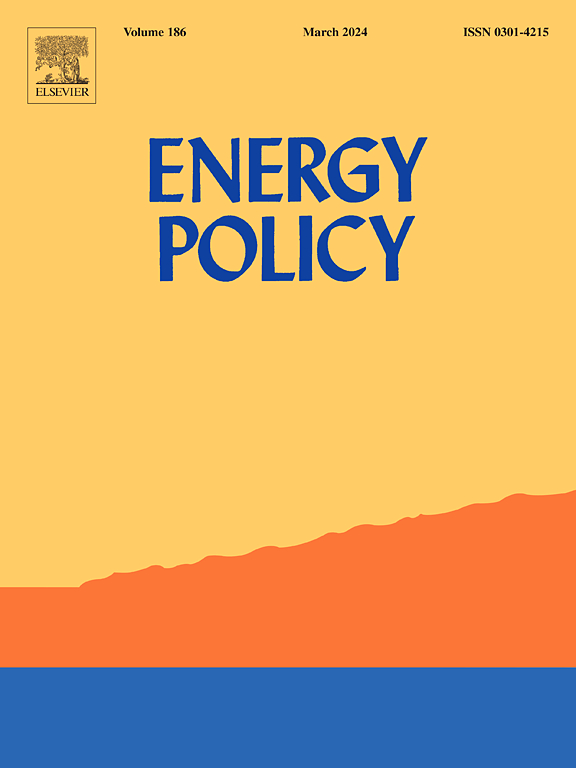评估电池储能系统的非固定电网连接:荷兰的协同优化案例研究
IF 9.2
2区 经济学
Q1 ECONOMICS
引用次数: 0
摘要
可再生能源容量的快速增长凸显了对灵活高效的电网连接的需求,强调了电池(BESS)等储能系统的重要性。到目前为止,BESS已经在稳定的电网连接协议下运行,确保不间断地接入电网,但由于需要电网升级,每年的电网费用很高,并且可能会导致安装延迟。为了解决这个问题,非固定的电网连接协议已经出现,允许更快的电网整合并降低基础设施成本。然而,这些协议带来了高峰期间削减的风险,这可能会影响BESS的盈利能力。为了评估这种影响,开发了一个日前完美预见协同优化模型,以评估BESS在多个电力市场(特别是日前、频率控制储备(FCR)和自动频率恢复储备(aFRR)市场)在公司和非公司并网政策下的参与情况。以荷兰为例进行研究,重点关注新提出的非公司接入(NFA)政策框架,该框架允许每年削减高达15%的电量,以换取大幅降低的电网费用。结果表明,虽然由于运营限制,非公司连接政策方案的总收入较低,但电网费用的大幅降低(高达65%)使其成为总体上更有利可图的选择。敏感性分析表明,历史电价数据和弃电天数的选择显著影响最有利的政策方案。本研究提出了一种新颖的协同优化建模方法,该方法明确地结合了充电状态管理约束,优化了在企业和非企业电网连接下跨多个电力市场的BESS参与。本文章由计算机程序翻译,如有差异,请以英文原文为准。
Evaluating non-firm grid connections for battery energy storage systems: A co-optimization case study of the Netherlands
The rapid growth of renewable capacity highlights the need for flexible and efficient grid connections, emphasizing the importance of energy storage systems such as batteries (BESS). So far, BESS have operated under firm grid connection agreements, ensuring uninterrupted access to the grid but resulting in high annual grid fees and potential installation delays due to required grid upgrades. To solve this, non-firm grid connection agreements have emerged, allowing faster grid integration and reducing infrastructure costs. However, these agreements pose a risk of curtailment during peak periods, which can impact the profitability of BESS.
To assess this impact, a day-ahead perfect foresight co-optimization model is developed to evaluate BESS participation across multiple electricity markets – specifically, the Day-Ahead, Frequency Containment Reserve (FCR), and automatic Frequency Restoration Reserve (aFRR) markets – under both firm and non-firm grid connection policies. The Netherlands is used as a case study, focusing on a newly proposed non-firm access (NFA) policy framework that allows curtailment for up to 15 % of the year in exchange for significantly reduced grid fees.
Results indicate that while the non-firm connection policy scheme yields lower gross revenues due to operational constraints, the substantial reduction in grid fees – up to 65 percent – makes it the more profitable option overall. Sensitivity analyses revealed that the choice of historical pricing data and curtailment days significantly influence the most favorable policy scheme.
This study contributes a novel co-optimization modeling approach that explicitly incorporates state-of-charge management constraints optimizing BESS participation across multiple electricity markets, under both firm and non-firm grid connections.
求助全文
通过发布文献求助,成功后即可免费获取论文全文。
去求助
来源期刊

Energy Policy
管理科学-环境科学
CiteScore
17.30
自引率
5.60%
发文量
540
审稿时长
7.9 months
期刊介绍:
Energy policy is the manner in which a given entity (often governmental) has decided to address issues of energy development including energy conversion, distribution and use as well as reduction of greenhouse gas emissions in order to contribute to climate change mitigation. The attributes of energy policy may include legislation, international treaties, incentives to investment, guidelines for energy conservation, taxation and other public policy techniques.
Energy policy is closely related to climate change policy because totalled worldwide the energy sector emits more greenhouse gas than other sectors.
 求助内容:
求助内容: 应助结果提醒方式:
应助结果提醒方式:


